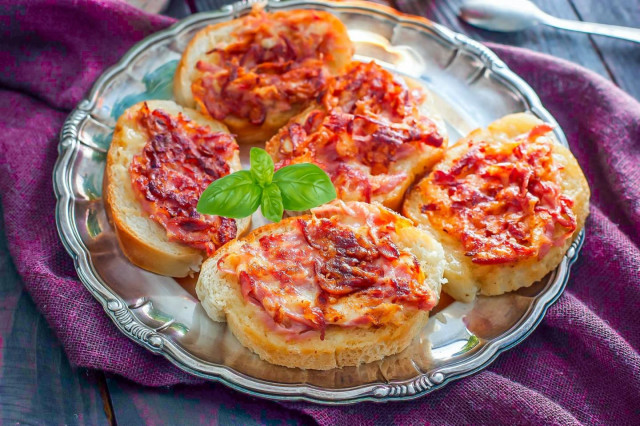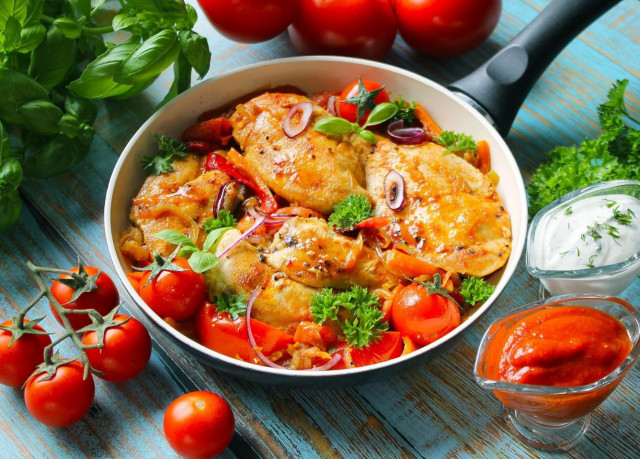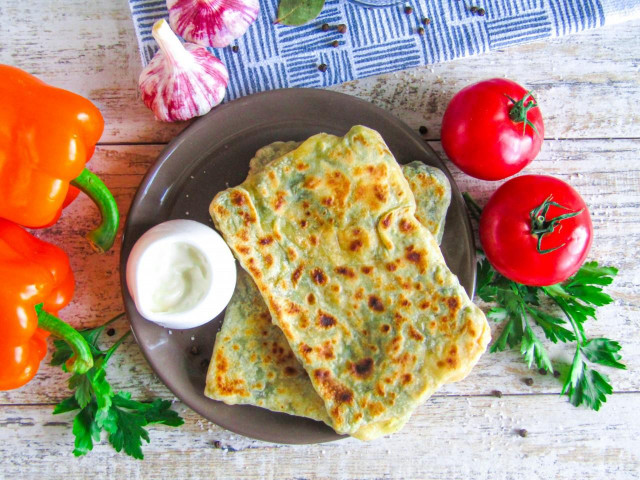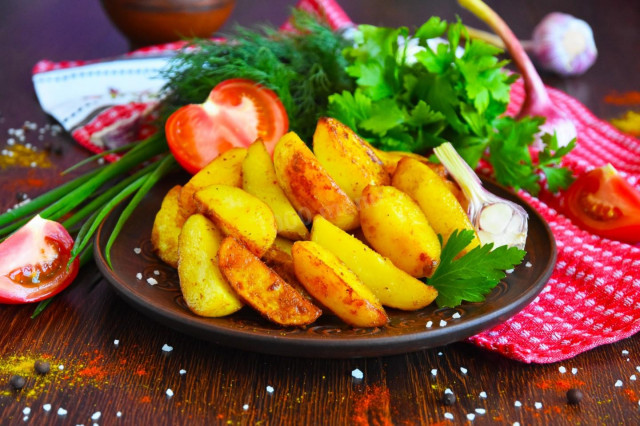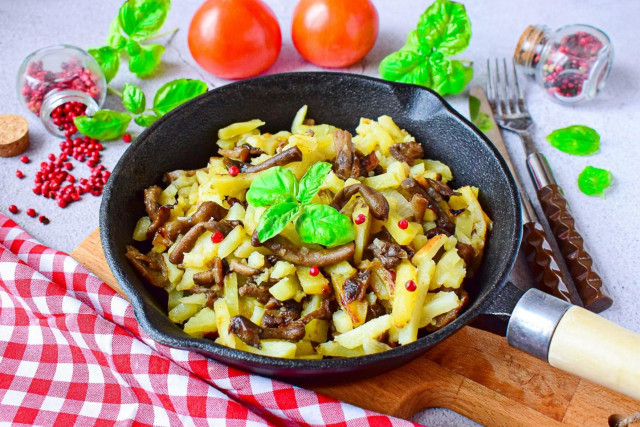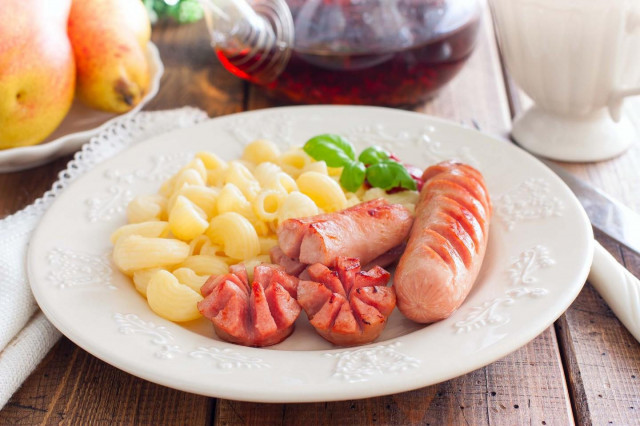Composition / ingredients
Step-by-step cooking
Step 1:
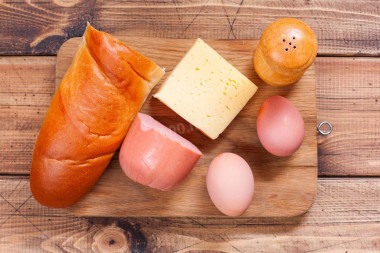
How to make fried sandwiches? Prepare the specified ingredients. Take boiled sausage, sausages or sausages are also suitable. Any hard and even semi-hard cheese will do. The main thing is that it is of high quality and melts well. As bread, choose a loaf, toast or baguette.
Step 2:
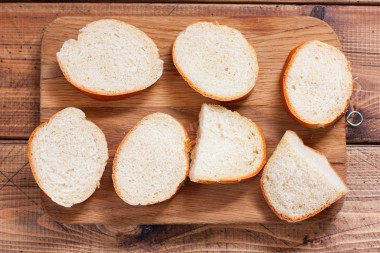
Cut fresh white bread into slices no more than a centimeter thick.
Step 3:
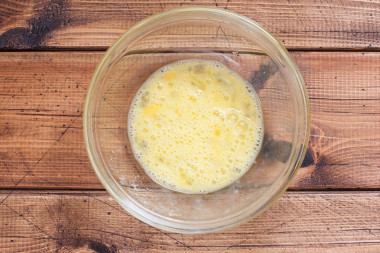
Break the prepared eggs into a deep bowl, add salt and whisk lightly.
Step 4:
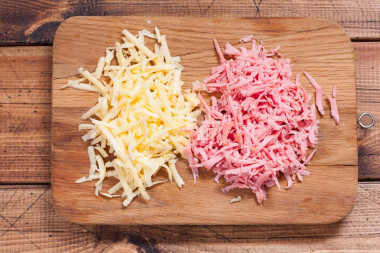
Remove the cheese and boiled sausage from the packaging and grate on a coarse grater. You can also finely chop the sausage or make a mixture of boiled and smoked sausage, choose according to your taste.
Step 5:
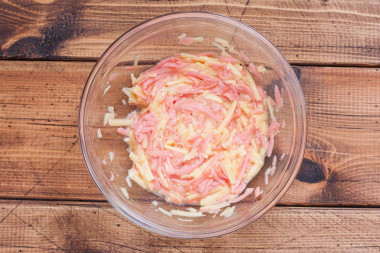
Add grated cheese and sausage to a bowl with eggs, mix well so that the ingredients are evenly distributed. It will turn out like this, a rather thick mixture.
Step 6:
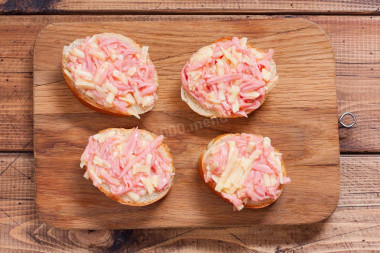
Put the prepared mixture for hot sandwiches on each piece of bread, lightly pressing it with a spoon.
Step 7:
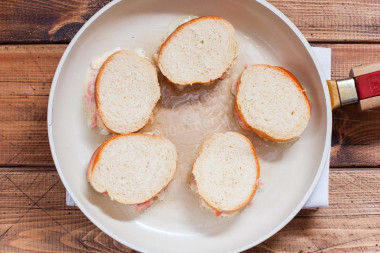
Heat the frying pan over medium heat. It is better if it is non-stick coated so that the sandwiches do not burn. Pour a drop of oil into the pan. With quick movements, so as not to drop the sausage-cheese mixture, put the sandwiches with the filling down. Fry them for a few minutes on a low heat, then turn them on the other side for half a minute to slightly dry the bread. Put the finished sandwiches on a plate. Serve immediately.
Hot sandwiches are always a winning option for breakfast, especially if there are children in the family. After all, it's almost a mini pizza that everyone loves. They are prepared simply and quickly. There are many variations of cooking. You can choose different bread - white, black, with bran, whole grain, Borodino. You can vary the amount of sausage and cheese, as well as the cheese and sausage themselves, try different combinations. They can be served immediately hot, or you can take them with you to work or for a walk - they will not lose their charm when cooled down. Fresh greens will perfectly decorate them for serving on the table.
Be sure to wash the eggs before use, as even the seemingly clean shell may contain harmful bacteria. It is best to use food detergents and a brush.
Use oil with a high smoking temperature for frying! Any oils are useful only until a certain temperature is reached - the point of smoking, at which the oil begins to burn and toxic substances, including carcinogens, are formed in it.
Unrefined oils, with rare exceptions, have a low smoking point. There are a lot of unfiltered organic particles in them, which quickly begin to burn.
Refined oils are more resistant to heating, and their smoking point is higher. If you are going to cook food in the oven, on a frying pan or grill, make sure that you use oil with a high smoking point. The most common of the oils with a high smoking point: refined varieties of sunflower, olive and grape.
Since the degree of salinity, sweetness, bitterness, sharpness, acid, burning is individual for everyone, always add spices, spices and seasonings, focusing on your taste! If you put some of the seasonings for the first time, then keep in mind that there are spices that it is especially important not to shift (for example, chili pepper).
Caloric content of the products possible in the composition of the dish
- Chicken egg - 157 kcal/100g
- Egg white - 45 kcal/100g
- Egg powder - 542 kcal/100g
- Egg yolk - 352 kcal/100g
- Ostrich egg - 118 kcal/100g
- Dutch cheese - 352 kcal/100g
- Swiss cheese - 335 kcal/100g
- Russian cheese - 366 kcal/100g
- Kostroma cheese - 345 kcal/100g
- Yaroslavsky cheese - 361 kcal/100g
- Altai cheese 50% fat content - 356 kcal/100g
- Soviet cheese - 400 kcal/100g
- Cheese "steppe" - 362 kcal/100g
- Uglich cheese - 347 kcal/100g
- Poshekhonsky cheese - 350 kcal/100g
- Lambert cheese - 377 kcal/100g
- Appnzeller cheese with 50% fat content - 400 kcal/100g
- Chester cheese with 50% fat content - 363 kcal/100g
- Edamer cheese with 40% fat content - 340 kcal/100g
- Cheese with mushrooms of 50% fat content - 395 kcal/100g
- Emmental cheese with 45% fat content - 420 kcal/100g
- Gouda cheese with 45% fat content - 356 kcal/100g
- Aiadeus cheese - 364 kcal/100g
- Dom blanc cheese (semi-hard) - 360 kcal/100g
- Lo spalmino cheese - 61 kcal/100g
- Cheese "etorki" (sheep, hard) - 401 kcal/100g
- White cheese - 100 kcal/100g
- Fat yellow cheese - 260 kcal/100g
- Altai cheese - 355 kcal/100g
- Kaunas cheese - 355 kcal/100g
- Latvian cheese - 316 kcal/100g
- Limburger cheese - 327 kcal/100g
- Lithuanian cheese - 250 kcal/100g
- Lake cheese - 350 kcal/100g
- Gruyere cheese - 396 kcal/100g
- Salt - 0 kcal/100g
- Sausage "amateur" - 291 kcal/100g
- Sausage "Ukrainian" - 404 kcal/100g
- Diabetic sausage - 254 kcal/100g
- Sausage "doctor" - 197 kcal/100g
- Diet sausage - 170 kcal/100g
- Milk sausage - 252 kcal/100g
- White bread - 266 kcal/100g

